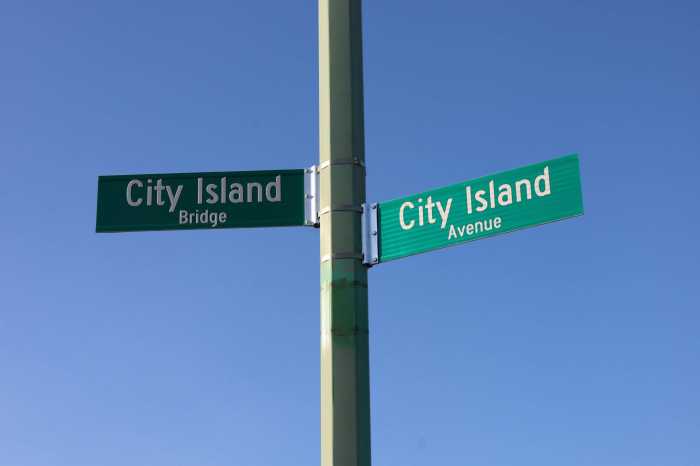City Island received two more individual landmarks at the end of 2017.
The Landmarks Preservation Commission had surveyed the area in the early 2000s in an effort to find preservation opportunities of buildings with historic or architectural significance.
One of the homes, called the Booth House, located at 30 Centre Street, stood out because of its unique style as well as the time period it reflected, according to Kate Lemos Mchale, the director of Research at LPC.
“The house we think was built by Samuel H. Booth and he and his family lived there,” said Mchale.
Samuel H. Booth was a prominent contractor on City Island during the 19th century, who is estimated to have built the home between 1887 and 1893, according to LPC’s report.
“It’s a very intact and high quality representative of Stick style. So we look for representative styles that are really the highest quality of that style.”
Stick is considered a transitional style between Gothic Revival and Queen Anne, which was popular in 19th century suburban and rural areas, according to the LPC report.
“The commission recognized a range of different building types and architectural styles,” added Mchale. “So recognizing the kind of varied Collections and importance of all these types of architecture I really think is fantastic.”
Though the building has had some renovations made to it by its newer owners, the building still has its original asymmetrical shape, according to LPC.
The second designation, the Captain H. Stafford home, is located at 95 Pell Street, and was a “mail-order” house built in 1930 and presents an important period of technological and social innovation in the history of American housing, according to an LPC press release.
While the Bronx Times Reporter was unable to reach the current owners of the Stafford house for comment, the Booth homes’ current owners, Wesley and Krista Rodstrom, however, were not as excited about the designation.
“I really didn’t want it to be on the historic registry because I was told it was going to be different, that things would change,” Wes Rodstrom said. “I enjoy historic preservation, but I don’t want restrictions on my home.”
Rodstrom, who purchased the home in 1991, said he enjoys the uniqueness of the house, but has been confused about what the designation means for him as a homeowner.
Rodstrom explained Barbara Dolensek, the vice president of the City Island Civic and Homeowners Association, whose own home was landmarked in 2000, was the one who informed him of the deisgnation vote and things to expect.
“One of the things that they don’t tell you at the beginning is that your entire property, your entire lot not just the house is landmarked, unless they make a certain distinction,” said Dolensek, who personally referred her own home for landmarking.
“It’s not necessarily a bad thing. There’s no evidence that values for the property go down,” Dolensek explained. “If it’s the whole lot (designated) and you want to add or change any permament stonework or garages on the peroperty, you have to get LPC approval, which is not always difficult.”
Rodstrom said the only correspondence he recalled receiving from LPC was a letter chronicling the timeline of the designation process that had taken place over the last six years.
Rodstrom said he received that letter on November 14, about a week and a half before the vote occurred, with the assumption a representative from LPC would be speaking with them in person, but they had no further contact with LPC.
“I think it’s great that the house will always stay,” Rodstrom added. “But as a homeowner it’s like a double edged sword.”
The Landmarks Preservation Commission claims that they sent correspondence to the Rodstroms from the time the home was being considered in 2009, but had never received a response either for or against landmark status.






















